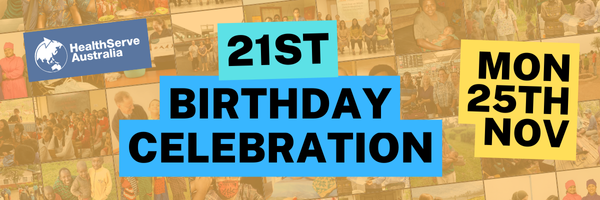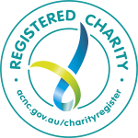
This blog post is part of HealthServe’s 21st Birthday Celebration series. All month we’ll be celebrating HealthServe’s past, present and future, culminating in a live online Celebration Event on Monday 25th November. We’d love to see you there! Details and registration here.
From funding life-saving medical equipment, to empowering communities, to shaping global health policy, the scope of HealthServe’s work over the years is incredible to look back on.
In this week’s blog post, we take an in-depth look at three programs that capture the essence of the HealthServe mission.
Debbie Butters from Anguganak Healthy Motherhood Project talks about the lessons she’s learnt in the years partnering with HSA in PNG; Dr Nick Woolfield recounts the impact HSA had in his project in Kyrgyzstan; and Dr Michael Burke looks back at how HealthServe made a big impact on HIV/AIDS policy through the Lausanne Cape Town Commitment.
Lessons learnt from Anguganak
By Debbie Butters
The Anguganak Healthy Motherhood Project first teamed with HealthServe in 2019 when we partnered with Christian Brethren Health Service and New Zealand donors who were planning a sustainable water supply project for the Anguganak Health Service. This became a protracted project partly from the restrictions caused around the world by the COVID pandemic and the challenges of transport and procurement of building supplies for remote communities.
There were also less obvious complexities that slowed the progress and have become valuable lessons. Complex cultural and historical divisions that resulted in less teamwork between community groups than expected. There were unspoken but long-standing Anguganak leadership divisions that led to reduced input from the local beneficiaries at the Health Service Centre and challenging power plays between community groups.
Still the project was completed in 2022 and as intended provides a reliable low maintenance water supply for the Health Service. Eight tanks under a solid roof structure up on higher ground, gravity feeds the water down to the health centre. There is now plenty of clean water for drinking and hygiene thus improving the standard of health care at the Health Centre and beneficial for the greater community around Anguganak.
I was at first reluctant for our team to be involved with a renovation of the maternity ward. If we were to support the project in any way it would need to be run differently. The design and implementation would be at a local level and the motivation needed to be driven by the community and health service not by the external stakeholders. We could certainly see that a space for women to stay before and after birth would improve the standard of care for mothers. This was something the surrounding communities wanted as lack of maternity accommodation was one of the reasons mothers stayed in the village and didn’t travel to Anguganak to give birth. This type of project would be in harmony with the HealthServe vision and aims and our Anguganak Healthy Motherhood objectives to increase the number of women who accessed safer birth choices.
So, we are pleased to say the project is well under way, being organised and implemented at a local level. We continue to provide the funds through Christian Brethren Churches administration so that there is accountability and transparency. We correspond with the Health Service Officer in Charge and he sends us photographs of the progress. This is truly a community driven project that we are partnering with to improve the health and wellbeing of the mothers and children of Anguganak and its wider communities.

Getting involved at a national level for change in Kyrgyzstan
By N.F. Woolfield, Paediatrician, STLI, Central Asia, August 2024.
We began working with an International Missionary organisation in 2011 and left for Central Asia in early 2013. After about 8 months of language study, we left to work in the east of the country and over time this work evolved to being a consultant to children at a hospital where up to 130 children who were deemed to be disabled, could come for two week sessions of therapy twice a year.
What was noted was that about 80% of these children had cerebral palsy and what we noted was the large proportion with dyskinetic cerebral palsy most of whom had a history of neonatal jaundice and after collecting data on over 200 children and analysing it, we realised that about one third of all children with cerebral palsy had dyskinetic CP caused by high levels of bilirubin (jaundice) in the newborn period. These children often develop normally until 5 or 6 months of age, then demonstrate the movement disorder we know as dyskinetic CP, which is permanent, difficult to treat, and a rare condition in the west. Further data collection only showed the same thing that about one third of all children with cerebral palsy had a form which is almost entirely preventable. This data was presented at a national level and was accepted by the key medical professionals who agreed that we needed to develop strategies to prevent this.
Phototherapy is part of the treatment for many cases of jaundice in newborns as the blue green light spectrum will change the bilirubin in the skin to a water soluble form which can be excreted. To see if lights are effective for phototherapy, they need to be checked with an instrument called an irradiance meter. With one of these we tested most of the units in the country and found that most did not work effectively.
So we decided to make our own and see if they would work. We bought LED lights at a local electrical store using the irradiance meter to guide us as to which lights appeared to have the correct light wavelength frequencies. We made the first phototherapy lights in 2019, and gained permission to try them at the local maternity hospital neonatal unit and had excellent feedback. It was clear then, that providing phototherapy lights through grants and making them ourselves with the assistance of local expertise was a feasible and good option for this low income country.
Initially grants were obtained from both the NZ and Australian embassies in Moscow, but we realised we needed more funds to make more and one of the members of HSA suggested we apply for grant funding. Donations from HSA were sent and assisted the ongoing making of phototherapy units.
To fast forward to 2023. Last year we were back and trained about 800 health workers on how to manage neonatal jaundice effectively, and the training was well received but involved a lot of travel and time. We were able to provide phototherapy units to all of the places where we did training and earlier this year, follow up with those who received them indicated that they were being used, were effective, and that the staff were pleased to be able to manage jaundice effectively. By the end of 2023 we know that around 50,000 babies had received phototherapy lights we had made from grant funds. One older doctor we trained last year got up at the end of the training and said that he has been treating jaundice incorrectly for most of his career and was very grateful for up to date treatment guidelines and the equipment to help him manage jaundice effectively in the future.
The ongoing challenges of 2024. We have been invited back by people involved in the Ministry of Health (really people involved with post grad education) to train trainers on how to manage jaundice effectively in newborns according to evidence based guidelines. This will take place in September 2024 and at least 15 people will be trained at two places, the aim being that these 30 professionals will then have a role in training others on how to manage jaundice in newborns.
One of the ongoing challenges is that the government has not given approval to our lights, not that they do not meet international standards, but that they have not been manufactured by a medical equipment manufacturer, and we will be working with a local light company to see if they will make them and enable government certification to be given, and the project to continue. Many hospitals continue to use the lights at their discretion despite the lack of certification and there have been no adverse outcomes with the lights. Those using them are delighted to use them as they are easy to use and very effective. Key local medical staff in senior positions remain key advocates for the cause over all and offer support and do lobbying on this where this is possible.
With the generous support of HSA and other donors, we can already anticipate that there are fewer disabled children with dyskinetic Cerebral Palsy but it will take some years before this becomes easy to measure. It is estimated that if all cases of Dyskinetic CP could be eliminated to children under 14 years, there would be about 9000 fewer children with this disability, and the government would save about US$8 million a year in disability pensions, apart from the fact that the children and families would avoid having this disability.
The impact of HSA on this project has been very significant as with the funds we were able to make more units which are in use in the south of the country. This sort of technology which sees these lights being made for a fraction of commercial ones, are key to making health improvements in low middle income countries, not only because they are made at lower cost, but they can be repaired locally when needed. So thank-you. This is an impactful project which remains ongoing and may well spread to neighbouring countries where issues are likely to be similar.
The impact on those of us on the field has been the encouragement to do more with the resources we have and this is huge.

HSA’s role in shaping HIV/AIDS policy
By Dr Michael Burke
In 2006, at the ICMDA conference in Sydney, the ICMDA HIV initiative was set up as a program of HealthServe Australia (HSA). This program sought to address the growing global health crisis of HIV/AIDS through compassionate care and evidence-based policy. However, it wasn’t until a few years later that HSA found itself unexpectedly making a significant contribution to global Christian health policy.
Although HSA did not attend the 2010 Lausanne Cape Town meeting, a key moment unfolded shortly after the conference. Chris Wright, the convenor of the Cape Town Commitment, reached out to our team, asking for feedback on the draft section related to HIV/AIDS. The initial draft was concerning—it presented a message that seemed to blame the victims of HIV rather than offer understanding and support.
Recognizing the importance of this moment, the HSA team quickly gathered and discussed the document. Drawing from recent research in Kenya that showed over 70% of HIV-infected women had only had one sexual partner, we recommended substantial changes. Our goal was to ensure that the message in the Cape Town Commitment reflected a compassionate, informed perspective, rather than perpetuating stigma.
Over the following days, emails flew back and forth between our team and Chris Wright. In a lengthy message, Wright expressed the challenge of making significant changes so late in the process. Yet, by the end of the exchange, he shared a revised draft that aligned much more closely with our recommendations. This new draft was incorporated into the final version of the Cape Town Commitment.
I still remember reading the news of this revision while sitting in the MAF office in Dar es Salaam. I was overwhelmed with joy, knowing that this document would help Christians around the world approach the HIV/AIDS crisis with greater understanding and empathy.
This experience taught us several lessons: the power of collaborative efforts, the importance of compassionate health policies, and how quickly an opportunity to make an impact can arise, even when unexpected.
The HSA/ICMDA HIV initiative continued to make an impact beyond this moment. From 2006 to 2015, the initiative primarily focused on HIV, with our work recognized through the ICMDA Dignity and Right to Health (DRH) Award. Since 2016, the scope of the DRH Award has broadened to address a wider range of health issues, but our foundational work in HIV/AIDS remains a cornerstone of HSA's legacy.
We are honoured to have played a part in shaping a document as important as the Lausanne Cape Town Commitment, contributing to a more compassionate and informed approach to HIV/AIDS in the Christian community.




